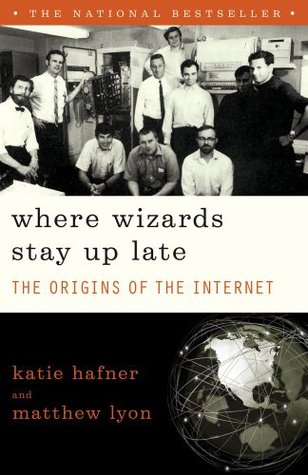More on this book
Community
Kindle Notes & Highlights
He concluded that a redundancy level as low as 3 or 4—each node connecting to three or four other nodes—would provide an exceptionally high level of ruggedness and reliability.
Baran’s second big idea was still more revolutionary: Fracture the messages too. By dividing each message into parts, you could flood the network with what he called “message blocks,” all racing over different paths to their destination. Upon their arrival, a receiving computer would reassemble the message bits into readable form.
Baran’s innovation also provided a much needed solution to the “bursty” nature of data communications. At the time, all communications networks were circuit-switched, which meant that a communications line was reserved for one call at a time and held open for the duration of that session.
What Baran envisioned was a network of unmanned switches, or nodes—stand-alone computers, essentially—that routed messages by employing what he called a “self-learning policy at each node, without need for a central, and possibly vulnerable, control point.”
In Baran’s model, each switching node contained a routing table that behaved as a sort of transport coordinator or dispatcher. The routing table at each node reflected how many hops, or links, were required to reach every other node in the network. The table indicated the best routes to take and was constantly updated with information about neighboring nodes, distances, and delays—much
Davies’ choice of the word “packet” was very deliberate. “I thought it was important to have a new word for one of the short pieces of data which traveled separately,” he explained. “This would make it easier to talk about them.” There were plenty of other possibilities—block, unit, section, segment, frame. “I hit on the word packet,” he said, “in the sense of small package.”
in 1965, computing had reached an unfortunate state of affairs; time-sharing projects were proliferating, but there was no “common ground for exchange of programs, personnel, experience, or ideas.” His impression of the computer science community was “of a number of essentially similar projects, each going off in its own direction with complete disregard for the others.” Why waste resources?
when Marill and Roberts actually connected the two machines, the results were mixed. The connection itself worked as planned. But the reliability of the connection and the response time were, as Roberts would describe them several years later, just plain lousy.
Roberts, too, was opposed to a centralized approach, but decided to delay his final decision until he could bring up the topic with a large group. His chance came soon, at a meeting for ARPA’s principal investigators in Ann Arbor, Michigan, in early 1967. Taylor had called the meeting, and the principal item on the agenda was the networking experiment. Roberts laid out his initial plan. The idea, as he described it, was to connect all of the time-sharing computers to one another directly, over dial-up telephone lines. The networking functions would be handled by the “host” computers at each
...more
By the end of July, 1968, Roberts had finished drafting the request for proposals. He sent it out to 140 companies interested in building the Interface Message Processor.
At its core, all engineering comes down to making tradeoffs between the perfect and the workable.
Between 1972 and the early 1980s, e-mail, or network mail as it was referred to, was discovered by thousands of early users.
Like Roberts’s first paper outlining the proposed ARPANET seven years earlier, the Cerf-Kahn paper of May 1974 described something revolutionary. Under the framework described in the paper, messages should be encapsulated and decapsulated in “data-grams,” much as a letter is put into and taken out of an envelope, and sent as end-to-end packets. These messages would be called transmission-control protocol, or TCP, messages.
DARPA had provided the research base and new technology. Now NSF would carry it forward to a larger community.
“Standards should be discovered, not decreed,” said one computer scientist in the TCP/IP faction. Seldom has it worked any other way.


